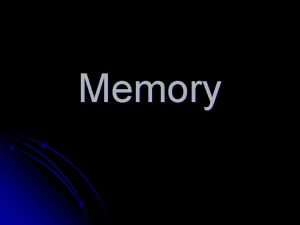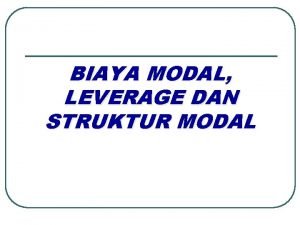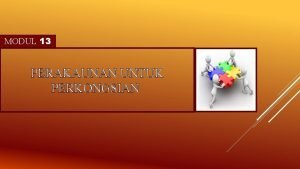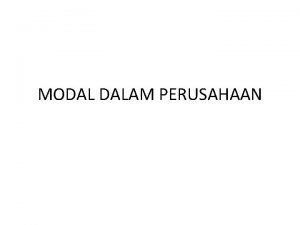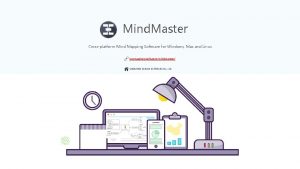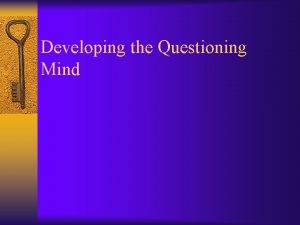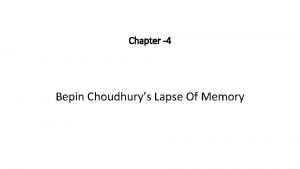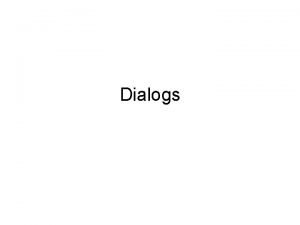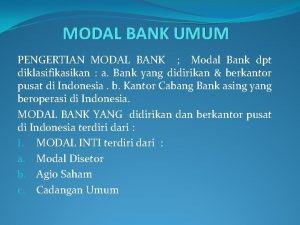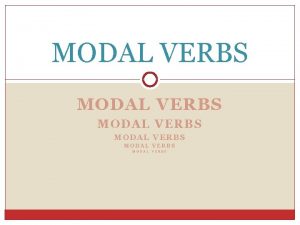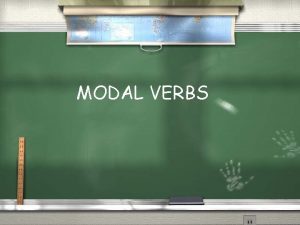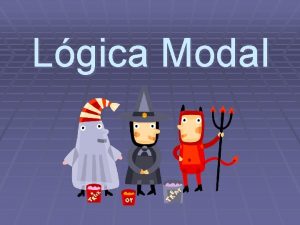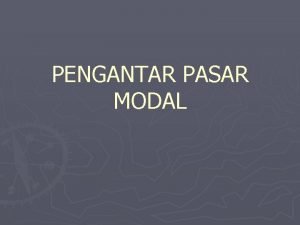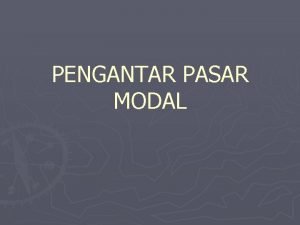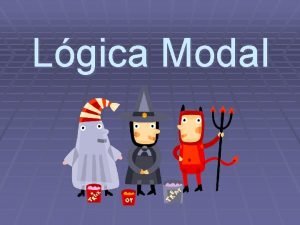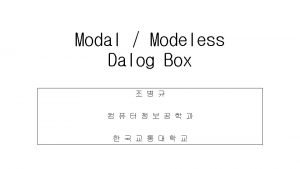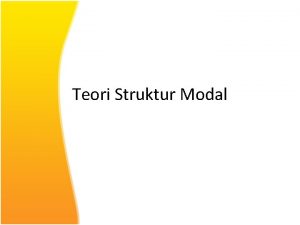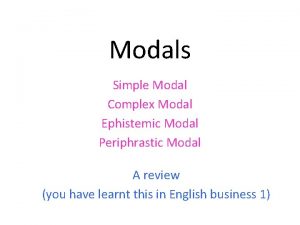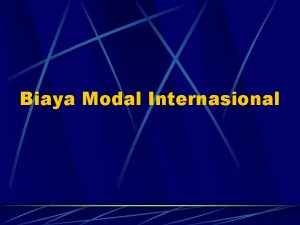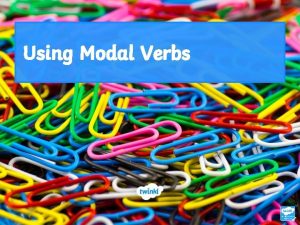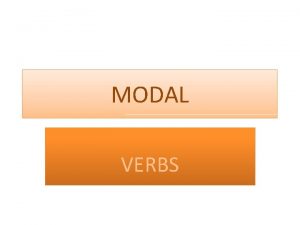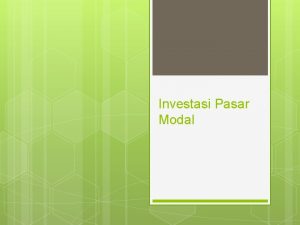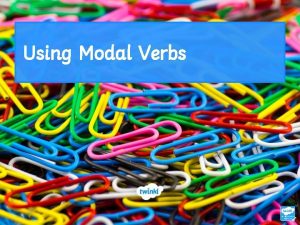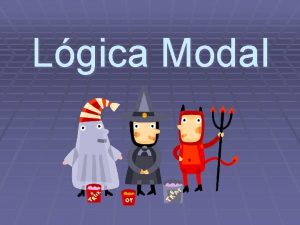Memory Modal Model of the Mind l l































- Slides: 31

Memory

Modal Model of the Mind l l Three memory stores Four Control Processes Maintenance Rehearsal Sensory Input Sensory Memory Attention Encoding Working or Long-term Short-term memory Memory Retrieval

Sensory Memory Store l Sensory Input Sensory Memory l Divided into two subtypes: l iconic memory - visual information l echoic memory auditory information Visual or iconic memory was discovered by Sperling in 1960

Sperling’s Experiment l Presented matrix of letters for 1/20 a second l Report as many letters as possible l Subjects recall only half of the letters l Was this because subjects didn’t have enough time to view entire matrix? No l How did Sperling know this?

Sperling’s Experiment l l Sperling showed people can see and recall ALL the letters momentarily Sounded low, medium or high tone immediately after matrix disappeared l tone signaled 1 row to report l recall was almost perfect z Memory for image fades after 1/3 seconds or so, making report of entire display hard to do High Medium Low

How does Information get from Sensory to STM? Who did research in this area?

Selective Attention l Also called “Preattentive Processing” Cherry 1953 Dichotic Listening

Cocktail Party Effect l l l The ability to focus on a single speaker, even if there are many speakers, is known as the “cocktail party effect” The hearing impaired have a diminished ability to focus on one speaker when there are numerous contemporaneous sounds Recent research aims to separate the audio signals so that only the speaker of interest is amplified by the hearing aid

Separation Methods l Classical methods l l Beamforming l l Assumes speech sources of no interest are in far field Adaptive Noise Cancellation l l Exploit spectral diversity Assumes availability of reference signal (which must not contain speech of interest) Blind Source Separation, BSS l Exploit spatial diversity, e. g. , speech sources must be spatially distinct

Short Term Memory Store l l l Function - conscious processing of information l where information is actively worked on Capacity - limited (holds 7 +/- 2 items) Duration - brief storage (about 15 - 30 seconds) Sensory Input Sensory Memory Attention Working or Short-term Memory

Short Term Memory l Miller – The Magical Number 7, Plus or Minus Two. l Chunking l Peterson and Peterson – Short Term Retention of Individual Verbal Items.

Maintenance Rehearsal Allows information to remain in working memory longer than the usual 30 seconds Maintenance rehearsal Sensory Input Sensory Memory Attention Working or Short-term Memory

Working Memory Model Baddeley (1992) l 3 interacting components l Visuospatial Sketch Pad Central Executive Phonological Loop

Working Memory Model l Visuospatial sketch pad - holds visual and spatial info Phonological loop - holds verbal information Central executive - coordinates all activities of working memory; brings new information into working memory from sensory and long-term memory Visuospatial Sketch pad Central Executive Phonological Loop

How does Information get from STM to LTM? Who did research in this area?

Encoding and Levels of Processing Craik and Tulving 1975 Type of Processing Deep 0 Shallow -Acoustic Shallow - Visual 10 20 30 40 50 60 70 80 Percent of words recalled 90 100

More Evidence for Elaboration Positive correlation between grades and use of elaboration in 5 th grade students l In an experiment, college students assigned to use elaboration received higher grades than students not taught elaboration l

Ways to Use Elaboration Actively question new information l Think about its implications l Relate information to things you already know l Generate own examples of concepts l Don’t highlight passage as you read l Focus on the ideas in the text l


Long-term Memory Systems Squire 1993

Explicit Memory l Also known as declarative or conscious memory

Implicit Memory Also known as nondeclarative memory Influences your thoughts or behavior, but does not enter consciousness

There is biological evidence for these theories as shown in Pet Scans.

Modal Model of the Mind l l Three memory stores Four Control Processes Maintenance Rehearsal Sensory Input Sensory Memory Attention Encoding Working or Long-term Short-term memory Memory Retrieval


Elizabeth Loftus and John Palmer: Memory Experiment and Hypothesis l Hypothesis: People will remember a car accident differently if given different language cues (words) about the accident

Loftus and Palmer: Methodology l l l Students watched a film of two cars colliding Collision was moderate with no broken glass Different students asked different questions: hit, smashed, collided, bumped, contacted

Loftus and Palmer: Results l l VERB MEAN ESTIMATE OF SPEED (MPH) Smashed 40. 8 Collided 39. 3 Bumped 38. 1 Hit 34. 0 Contacted 31. 8 People reported the fastest speeds if the researchers had used the word “smashed” in the question From fastest to slowest reported speeds: smashed, collided, bumped, hit, and contacted groups

Loftus and Palmer: Results l l One week later, subjects were asked if they had seen broken glass 32% of subjects asked the “smashed” question said yes; 14% of subjects asked the “hit” question said yes

Loftus and Palmer: Results and Implications l l People remember things differently depending on the language used to describe an event (e. g. , “smashed” versus “hit”) Misinformation effect

Role of Time : Decay Theory l l Memories fade away or decay gradually if unused Time plays critical role Ability to retrieve info declines with time after original encoding Problem: Many things change with time. Something else may change and actually cause forgetting: Interference
 Cherry 1953 dichotic listening
Cherry 1953 dichotic listening Penyata mengira modal format
Penyata mengira modal format Modals and semi-modals
Modals and semi-modals Berapa modal
Berapa modal Untung bersih formula
Untung bersih formula Modal aktif dan modal pasif
Modal aktif dan modal pasif Brainstrorming
Brainstrorming A wondering mind is an unhappy mind
A wondering mind is an unhappy mind The critical mind is a questioning mind
The critical mind is a questioning mind Bepin choudhury lapse of memory lesson plan
Bepin choudhury lapse of memory lesson plan Prototype in semantics
Prototype in semantics Difference between implicit and explicit memory
Difference between implicit and explicit memory Long term memory vs short term memory
Long term memory vs short term memory Internal memory and external memory
Internal memory and external memory Primary memory and secondary memory
Primary memory and secondary memory Logical and physical address in os
Logical and physical address in os Which memory is the actual working memory?
Which memory is the actual working memory? Virtual memory and cache memory
Virtual memory and cache memory Virtual memory in memory hierarchy consists of
Virtual memory in memory hierarchy consists of Eidetic memory vs iconic memory
Eidetic memory vs iconic memory Shared vs distributed memory
Shared vs distributed memory Hát kết hợp bộ gõ cơ thể
Hát kết hợp bộ gõ cơ thể Ng-html
Ng-html Bổ thể
Bổ thể Tỉ lệ cơ thể trẻ em
Tỉ lệ cơ thể trẻ em Voi kéo gỗ như thế nào
Voi kéo gỗ như thế nào Tư thế worm breton là gì
Tư thế worm breton là gì Chúa sống lại
Chúa sống lại Các môn thể thao bắt đầu bằng tiếng đua
Các môn thể thao bắt đầu bằng tiếng đua Thế nào là hệ số cao nhất
Thế nào là hệ số cao nhất Các châu lục và đại dương trên thế giới
Các châu lục và đại dương trên thế giới Công thức tiính động năng
Công thức tiính động năng
